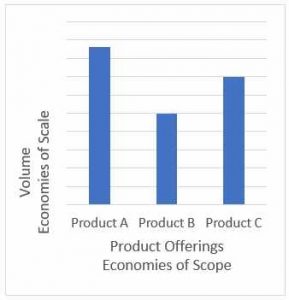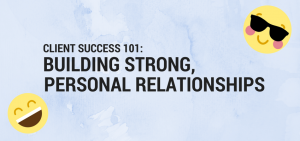You’ve heard it before – strategies don’t get executed as planned or at all, and people in your organization are not fully engaged. In fact, strategy execution eats strategy for lunch. The conundrum is – why do so many organizations struggle when it comes to bringing their strategies to life?
To help your organization decode this mystery, here are six success routines for executing strategy.
Success Routine #1: Nurture your strategy, don’t launch it
While executives spend months reading market research, listening to customer requirements, grappling with changing marketplace conditions, and forming a strategy to help the organization achieve strategic objectives, they spend very little time on how they will roll the strategy out to their people beyond the initial memo, PowerPoint or town-hall meeting. You can’t just roll out a giant presentation deck and tell your people it’s time to execute. You need to take it in steps.
Seeing it in action
A large U.S. contact center decided to evolve its strategy over a three-year period and leverage an annual conference as the forum to introduce people to the strategy and help them prepare for execution.
Conference year 1: They laid out the playing field and explained the strategy. Conference year 2: They talked about growth, stabilization, and what they could learn. Conference year 3: They discussed how they could lead and continue to grow to outpace their industry and set the bar.
Success Routine #2: Hardwire the last hundred yards
Strategy is like an energy company. The strategy creators are akin to the power plant that generates the energy. The leaders who need to convey the strategy within the organization are responsible for taking that generated energy and distributing it, like power lines. The final step in the process is hardwiring the last hundred yards – from the utility pole, to the house, through the outlet, to the actual light bulb.
We often make it through the whole process but stop short of the hardwiring. So, there are disconnects between the new strategy and daily routine; the lights aren’t on yet and the people don’t know how to flip the switch.
Seeing it in action
In many hotels, most of the people on the “front lines” don’t know much about the strategy, let alone care about the actual performance metrics. At one leading hotel chain, they spend an intensive amount of time helping everyone – no matter their role – understand the strategy, recognize how their actions and behaviors impact the strategy, and what that means to the measures the organization is using to identify success.
This translates to high levels of performance and engagement to the point that a front desk employee looks at customer satisfaction scores on a daily basis, rating herself and striving to see where she could improve. She makes it her business to work toward raising scores because she knows customer satisfaction is a huge differentiator in her company’s market.
Success Routine #3: Clear up the paradox of accountability
Some people draw very definite lines regarding accountability. Mine = my business and my urge to drive success. Yours = not my problem. At the other end of the spectrum, people and organizations can be collaborative to a fault. They lack any decision-making mechanism – doing everything by committee or consensus, which significantly hinders results.
Navigating this collaboration paradox is difficult and takes time and patience, just like nurturing the strategy itself. It involves learning from mistakes, openness, and feedback loops to strike the right balance and answer the important questions. In achieving co-accountability, you create shared metrics so everyone has a horse in the race.
Seeing it in action
A group at a large produce wholesaler encountered this very paradox between accountability and collaboration. Two teams – one in sales and one in buying – worked toward different goals and swayed too far toward accountability or too far toward collaboration, but they couldn’t find the balance. It took two years for the group – led by the managers of the two groups – to uncover the best way to collaborate and hold themselves accountable. It required changing the teams’ dynamics and identifying the right metrics to measure against and the incentive to drive the right behaviors.
Success Routine #4: Don’t let your message get lost in translation
When developing strategies the creators may become so immersed in the language that, while it may seem comfortable and familiar to them, the receivers likely will not feel the same. This jargon and “shop talk” isn’t nearly as effective as “street talk” could be. The best organizations know how to empathize with their people and create materials in a language and tone that is familiar and easy to digest. If your strategy resonates with your people, they can then prioritize, interpret and simplify.
Seeing it in action
A general manager of a quick service restaurant has a five-foot-tall bulletin board literally covered in papers. When asked what the papers were, the general manager said they were a week’s worth of communication from the home office detailing initiatives and priorities for the restaurant. When asked how she decides what to do, she answered, “We just do what keeps us out of trouble.” The overwhelming amount of corporate orders immediately created an environment where prioritization, integration and simplification at the receiver level became all about doing what keeps things status quo – like operating in survivor mode.
Success Routine #5: Track your most crucial delivery – your strategy
When you send a package, you probably track it. You may even send the recipient a note or call them to be sure they got it. So why would you roll out a new corporate strategy and not follow the same routine? Why wouldn’t you create a feedback loop like you would with other business projects?
Typically, leaders unveil a new strategy and then leave it to the managers to discuss with their respective teams, washing their hands of the communication process and assuming it’s all understood and will be handled. But instead of turning it over and stepping aside, they should be asking questions.
- Did you get it?
- Did you see it?
- Did you hear it?
- Do you understand it?
- What does it look like to you?
- Can you do what needs doing?
- Is there something that doesn’t work the way it was intended?
When it comes to executing strategy, the best organizations build in robust and rapid feedback loops. This is the only way you can improve and tweak the strategy so that the intention and the reality intersect.
Seeing it in action
Everyone wanted a direct connection to the CEO at the company so they could feel as though they were more in the loop on the strategy. And while it’s not realistic for the CEO to have lunch with everyone in the business, it is realistic to create that feeling of “being in the loop.” The best companies use the management tier to get the rest of the organization connected and plugged in, which enables them to cascade it to the rest of the business.
Success Routine #6: Give the whole picture – it matters more than you think
While people tolerate the conclusions of their leaders, they ultimately choose their own actions. Leaders need to make sure people understand the competitive dimensions of their organization. It’s simply not enough for your people to know YOUR business. They need to be savvy about the competition and the overall market to put everything in perspective so they are equipped to calibrate their choices and execution so they align with the company strategy.
Seeing it in action
A large hotel chain places a strong focus on an unconditional customer experience guarantee as their differentiator. Because their people are responsible for supporting and delivering on that guarantee, they have invested time in frontline employees, the people who have a direct line of communication with the customer.
They help the front line:
- Prioritize what they need to do
- Understand the competitive landscape
- Realize why the customer experience makes such a difference
- See what the customer experience looks like
- Translate the experience into their own roles and behaviors
Being armed with this information provides the front line with enough context to make the right decisions for the greater benefit of the brand.
These six approaches enable any organization or team to adopt a high-performing mindset. Once you’ve done that, you can work with your employees the same way you would your customers – understanding, nurturing, and developing them. They’ll feel empowered, engaged, and excited to transform your organization – to move to the right side of the curve.
Go ahead. Engage your people and see what happens to your results – to your entire organization.
Business & Finance Articles on Business 2 Community(29)
Report Post







